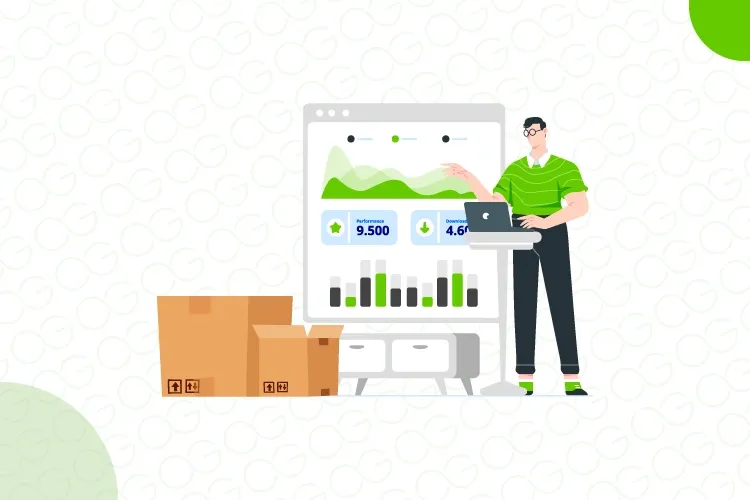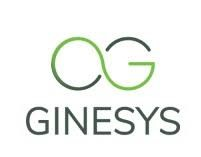5 Key Insights You Can Learn from Stock Cover, Stock Ageing, and Stock Valuation Reports

For retailers and wholesalers, poor inventory control leads to financial losses, stock shortages, or excess capital tied up in unsold goods. Without strategic oversight, businesses risk holding obsolete stock or failing to meet market demand.
Recent market dynamics strongly suggest the importance of smart inventory decisions. For instance, while the S&P 500 delivered a stellar 5.4% return in November 2024—its best month of the year—analysts now project more tempered gains for 2025, emphasizing sectors driven by AI and economic transformation. This highlights a growing need for agility in stock planning and valuation.
Stock cover, stock ageing, and stock valuation reports don’t just track numbers—they reveal patterns in product movement, aging inventory, and the financial impact of stock decisions. By interpreting these reports effectively, businesses can reduce waste, optimize replenishment cycles, and adapt their inventory to align with both macroeconomic trends—such as inflation influenced by AI and low-carbon investments—and micro-level customer demand.
In this blog, we break down 5 key things in these reports that can help build a more responsive, financially sound inventory strategy in 2025 and beyond.

Make every inventory decision count with Ginesys’ real-time stock reports and analytics.
1. Match Inventory with Real-Time Demand Using Stock Cover Reports
The first thing these reports can teach you is how to keep your inventory levels in sync with what customers are actually buying. Stock cover reports show how long your current inventory will last based on sales trends, helping you react faster and smarter.
- Catch Inventory Imbalances Early: With stock cover reports, you get immediate visibility into whether you're holding too much or too little of a product. Spotting these mismatches early helps prevent overstocking (which ties up capital and increases storage costs) or understocking (which leads to missed sales).
- Base Purchase Decisions on Real Demand: Instead of relying on gut instinct or static reorder points, businesses can use stock cover insights to fine-tune purchasing decisions. This ensures procurement is guided by current sales velocity—helping avoid piling up slow movers or falling behind on bestsellers.
- Protect and Improve Cash Flow: When inventory is aligned with demand, working capital isn’t stuck in unsold goods. Stock cover data supports leaner operations, better liquidity, and greater financial agility to handle growth, unexpected expenses, or strategic investments.
Additionally, when integrated with demand forecasting tools, stock cover reports can help businesses predict seasonal trends, sales fluctuations, and peak demand periods. For businesses operating in or supplying fast-moving sectors, stock cover reports are critical to avoid missed opportunities or surplus inventory.
2. Identify and Clear Slow-Moving Inventory with Stock Ageing Reports
Stock ageing reports break down your inventory based on how long items have been sitting in storage. This helps businesses identify slow-movers early and take action before those products become dead stock.
- Avoid Cash Traps: Slow-moving stock ties up capital and eats into profits. With ageing reports, you can quickly flag products that aren't selling and move them out—through targeted discounts, bundling offers, or changing your sales approach. The result? Better cash flow and more room for fast-moving items.
- Make Room for What Sells: Old inventory takes up valuable warehouse space that could be better used. By reviewing your stock ageing data regularly, you can free up storage for products in demand—reducing clutter and improving operational efficiency.
- Stay Ahead of Shifting Demand: What’s popular today may not sell tomorrow. With rising trends in AI products and sustainable tech, consumer preferences are evolving fast. Ageing reports give you the visibility to adjust quickly, so you’re not left with outdated or irrelevant inventory.
- Increase Inventory Turnover: Use ageing data to schedule smart promotions, end-of-season sales, or supplier negotiations for fresher stock. Acting on this data regularly improves your turnover rate and keeps your inventory lean, responsive, and profitable.
For instance, if a retailer sees that a seasonal product is nearing the end of its lifecycle, they can launch a targeted discount campaign to clear stock before it becomes unsellable. Similarly, wholesalers can use stock ageing reports to negotiate better terms with suppliers, ensuring that inventory remains fresh and relevant to market trends.
Using inventory ageing insights, businesses can also establish better supplier relationships by aligning procurement with actual demand. Automated stock ageing alerts can further help in preventing excessive accumulation of slow-moving goods.

Stay ahead of demand shifts—optimize stock levels with Ginesys ERP's automated insights.
3. Fine-Tune Pricing and Tax Strategies with Stock Valuation Reports
Stock valuation reports give you a real-time view of your inventory’s worth by applying accounting methods like:
- FIFO (First In, First Out): Ideal for perishable or time-sensitive goods, assuming the oldest inventory is sold first.
- LIFO (Last In, First Out): Assumes newer stock is sold first—often used to manage profits and taxes during inflation.
- Weighted Average Cost (WAC): Spreads costs evenly across units, offering a balanced view for consistent pricing decisions.
Stock valuation reports are therefore essential for:
- Making Strategic Pricing Decisions: When you know the true cost of inventory, it’s easier to set profitable prices. Whether it’s timing a price hike, offering targeted discounts, or holding stock for future demand spikes—stock valuation helps you price with confidence.
- Ensuring Financial Accuracy: Inventory is one of the biggest numbers on your balance sheet. Valuation reports ensure your financial statements reflect the correct inventory value—keeping you in line with accounting standards and investor expectations.
- Optimizing for Tax Efficiency: Valuation methods impact how much tax you owe. In inflationary periods, LIFO may reduce taxable income by showing higher costs, while FIFO could inflate profits. Choosing the right method helps businesses plan smarter and reduce tax liabilities.
- Maximizing Profit Margins: Understanding how inventory costs shift over time allows you to protect or grow margins. For example, if acquisition costs are rising, knowing when and how to adjust prices can prevent profit erosion.
Let’s say an electronics retailer uses WAC and sees that average unit costs are increasing. They can adjust pricing before margins shrink. Meanwhile, a manufacturer using LIFO might choose it during inflationary times to reflect higher input costs and lower taxable income.
With up-to-date stock valuation data, businesses gain the financial clarity needed to back every pricing move with strategy—not guesswork.

4. Prevent Dead Stock and Overstocking with Stock Ageing and Cover Reports
One of the most valuable lessons businesses can draw from inventory reports is how to avoid the twin pitfalls of dead stock and overstocking—both of which tie up cash, inflate storage costs, and erode margins. Stock ageing and stock cover reports offer practical insights to help you stay ahead of these issues.
- Spot Slow-Moving Items Before They Become Dead Stock: Stock ageing reports show how long products have been sitting in your warehouse. This helps flag inventory that needs action—whether through markdowns, bundles, or special offers—before it becomes unsellable.
- Refine Your Procurement to Avoid Overstock: Stock cover reports calculate how long current inventory will last based on sales trends. With this insight, businesses can avoid overordering and keep stock levels aligned with actual demand—freeing up capital and reducing holding costs.
- Automate Smart Replenishment: By feeding these reports into an automated inventory system, businesses can strike the right balance—restocking just enough, just in time. This reduces the risk of both overstock and stockouts, while improving order planning and efficiency.
For example, if a retailer sees through the reports that smartwatches are overstocked but selling slowly, they might bundle them with high-demand fitness trackers to move inventory faster and clear shelf space for better-selling items.
Learning to interpret and act on ageing and cover data is key to building a lean, responsive inventory strategy that protects your bottom line.

Minimize risk and maximize margins with automated inventory alerts and analytics.
5. Make Strategic Pricing Decisions Based on Stock Insights
Another critical takeaway from stock reports is the ability to fine-tune your pricing strategy based on real-time inventory insights. When businesses rely on guesswork, they risk undervaluing high-demand items or holding onto slow-movers for too long. Stock ageing and valuation reports give you the data to price with precision.
- Target Discounts Where They Matter: Use stock ageing reports to spot aging inventory and apply calculated markdowns before items lose value. This prevents write-offs and keeps your product lifecycle moving efficiently.
- Balance Profit Margins and Market Competitiveness: Stock valuation reports help you understand your true inventory costs. With this data, you can price products competitively without sacrificing your margins—ensuring you stay profitable even in price-sensitive markets.
- Segment Your Pricing Strategy: Rather than blanket discounts, stock insights allow you to tailor markdowns. For instance, you might offer light discounts on high-margin products, while aggressively pricing items that have lingered too long.
Take a fashion retailer, for example—they can use ageing data to pinpoint last season’s apparel and launch a clearance campaign at just the right price point, clearing shelves without hurting profits.
Get Access to Advanced Stock Reporting with Ginesys
Ginesys is a comprehensive retail ERP and POS solution designed to help businesses gain complete control over their inventory, sales, and financial operations. With robust inventory management tools, real-time reporting, and built-in analytics, it’s suite of retail solutions enables retailers and wholesalers to enhance stock visibility, optimize turnover rates, and make strategic inventory decisions that support sustainable growth.
- Get Real-Time Inventory Valuation with Built-In Finance Tools: Ginesys ERP’s Finance and Accounting module gives businesses a live view of stock value, directly integrated with financial records. This means procurement decisions are backed by accurate cost data—helping companies protect margins, plan smarter, and stay compliant.
- Stay Ahead of Inventory Risks with Stock Ageing and Cover Reports: Using Ginesys ERP’s detailed stock ageing and cover reports, businesses can flag slow-moving items early, fine-tune reorder points, and avoid locking up capital in products that don’t sell. These insights are key to maintaining lean inventory and higher turnover rates.
- Respond Faster with Automated Alerts and Reporting: With automated stock tracking and real-time analytics, Ginesys ERP helps businesses act quickly on demand shifts. Whether it’s avoiding a stockout or catching overstock trends early, companies can rely on timely insights to keep inventory balanced and profitable.

Level up your retail operations with data-backed inventory decisions.
Stock reports aren’t just about tracking numbers—they’re a key driver of smarter inventory decisions, stronger financial planning, and healthier profit margins. With the right insights from stock cover, ageing, and valuation data, businesses can fine-tune inventory levels, cut waste, and stay financially agile.
A data-led approach helps companies avoid holding excess stock, respond faster to demand shifts, and make pricing decisions rooted in real costs. Ginesys ERP simplifies this process through real-time reporting, automated alerts, and actionable analytics—so inventory works for your business, not against it.
Drive better margins and faster turnover—explore Ginesys ERP in a personalized demo.
